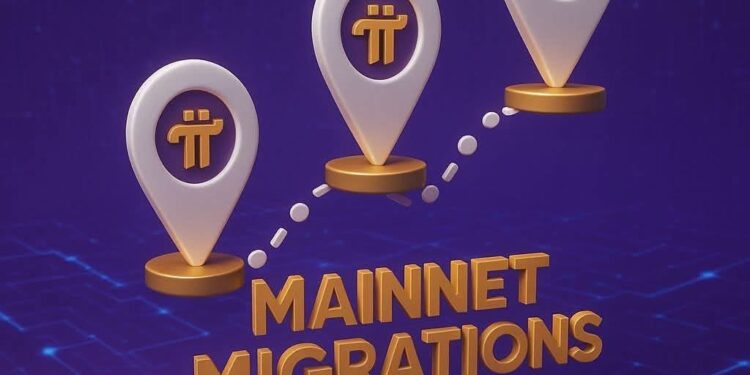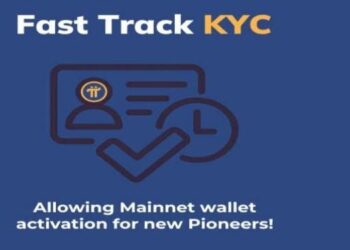On April 17, 2025, Pi Network officially announced its detailed roadmap for migrating Pi tokens to the Mainnet. This announcement has drawn attention across the community, as it outlines how rewards earned during mining and community participation will gradually move from the test environment into users’ Mainnet wallets.
The migration process is carefully structured into three phases, focusing on fairness, transparency, and long-term sustainability. At the same time, Pi Network has provided updated insights into its tokenomics model, total supply allocation, and how users can track their progress through the in-app Mainnet Checklist.
This article provides a complete breakdown of the roadmap, tokenomics, expected timelines, and what users should do to prepare for the Mainnet era.
Why the Mainnet Migration Matters
Before diving into the phases, it is important to understand why the Mainnet transition is such a significant milestone.
For several years, Pi Network has operated in what it calls the Enclosed Mainnet phase. During this time, users were able to mine Pi through the mobile app, verify their identity via KYC, and experiment with ecosystem applications. However, Pi tokens could not yet move freely across exchanges or interact with external blockchains.
The upcoming migration to the Open Mainnet will finally allow verified users to:
- Access their mined and earned rewards in fully transferable Mainnet wallets.
- Use Pi tokens in decentralized applications (dApps) and services.
- Contribute to liquidity and ecosystem development.
- Participate in a more decentralized and transparent economic system.
With that foundation in mind, let’s explore the official roadmap.
The Pi Network Mainnet Migration Roadmap
Pi Network has broken down the migration into three distinct phases. Each phase focuses on a different category of rewards to ensure a structured and fair rollout.
Phase 1 – Initial Migration
The first phase targets verified rewards that can be easily audited and linked to user activity. These include:
- Base mining rewards: The Pi earned daily through mobile mining sessions.
- Security Circle rewards: Tokens gained by building trusted networks within the app.
- Lock-up rewards: Extra Pi earned by committing mined tokens to a lock-up period.
- Utility app rewards: Tokens gained through participation in Pi-based applications.
- Node rewards: Rewards distributed to users running verified Pi Network nodes.
This initial stage ensures that the most transparent and verifiable rewards are transferred first.
Phase 2 – Referral Rewards Migration
After Phase 1, Pi Network will begin migrating referral rewards. These rewards are only eligible for migration if the referred members have successfully completed their KYC verification.
This design prevents misuse and ensures that only legitimate, verified community growth is rewarded. It also motivates users to encourage their referrals to complete KYC as soon as possible.
Phase 3 – Periodic Migration Cycles
Once the first two phases are complete, Pi Network will move into an ongoing migration cycle. These scheduled migrations may occur monthly or quarterly.
In each cycle, any remaining rewards—whether from late KYC completions, utility participation, or other eligible categories—will be gradually transferred into Mainnet wallets.
This recurring system helps the project remain flexible, accommodating users who complete verification later and ensuring no one is left behind.
Tokenomics: How Pi Is Distributed
Pi Network has set a maximum supply of 100 billion Pi tokens, allocated in a way that supports decentralization, community growth, and ecosystem development. The breakdown is as follows:
- 65% for community mining rewards – The largest share, ensuring early adopters and active participants benefit.
- 20% for the Core Team – Reserved for the founding team and long-term development.
- 10% for the Foundation – Dedicated to ecosystem building, developer grants, and community projects.
- 5% for liquidity – Allocated to ensure stability when the token becomes transferable.
Over time, mining rewards decrease, encouraging long-term sustainability and preventing inflation. This gradual reduction incentivizes early participation while keeping the network decentralized.
Timelines and Community Concerns
While the roadmap is clear in structure, Pi Network has not yet provided exact dates for when each phase will begin or end.
This lack of a strict timeline has caused mixed reactions within the community:
- Optimists see this as a sign of caution, ensuring the transition is secure and technically sound.
- Skeptics worry about delays, citing past criticisms of Pi Network’s long development cycle.
The project has responded by emphasizing fairness and accuracy over speed. According to the Core Team, rushing the migration could compromise both transparency and security.
How to Check Your Migration and KYC Status
For individual users, knowing where they stand in the migration process is crucial. Thankfully, Pi Network provides a built-in tool called the Mainnet Checklist.
By opening the Pi Network mobile app, users can:
- Navigate to the Mainnet Checklist section.
- View their KYC verification status.
- Confirm whether their Mainnet wallet is properly set up.
- Track which rewards are eligible for migration.
This checklist serves as a personal dashboard, ensuring users remain informed throughout the process.
Frequently Asked Questions About Pi Mainnet Migration
To help the community better understand the transition, here are answers to some of the most common questions.
1. Do I need KYC to migrate my Pi?
Yes. Only verified accounts are eligible for migration. Without KYC, your rewards will remain locked until verification is complete.
2. Will referral rewards be lost if my referrals never complete KYC?
Referral rewards depend on whether your referred members pass KYC. If they never verify, those rewards cannot be migrated.
3. Can I still mine Pi during migration?
Yes. Mining continues, though rates decrease over time as the network matures.
4. When will Pi be tradeable on exchanges?
The Core Team has not set a specific date. Transferability will likely come after sufficient progress in Phase 3.
5. What happens to unclaimed rewards?
Unmigrated rewards may remain locked until the user completes the necessary steps. Regular migration cycles provide additional chances to transfer them later.
Preparing for the Future of Pi
For long-term Pi holders and active miners, the roadmap represents an exciting turning point. To prepare, users should:
- Complete KYC verification as soon as possible.
- Set up and secure their Mainnet wallets.
- Stay informed about updates through official Pi Network channels.
- Participate in ecosystem applications to give Pi tokens real utility.
By taking these steps, community members can maximize their participation in the upcoming Mainnet era.
Final Thoughts
The Pi Network Mainnet migration roadmap is a landmark development in the project’s journey. By dividing the process into clear phases, Pi Network aims to ensure fairness, transparency, and sustainability.
Although the absence of fixed dates has caused some uncertainty, the structure of the roadmap shows that the Core Team is committed to a careful and methodical transition.
For users, the most important actions are simple: complete KYC, set up a Mainnet wallet, and stay engaged with the community. As the migration unfolds, Pi Network could move closer to becoming one of the most widely adopted cryptocurrency ecosystems.
The months ahead will be crucial, and all eyes are on Pi Network as it prepares to take the next big step into the world of decentralized finance.




